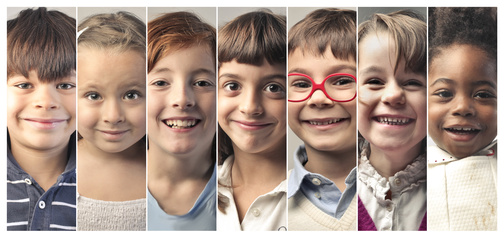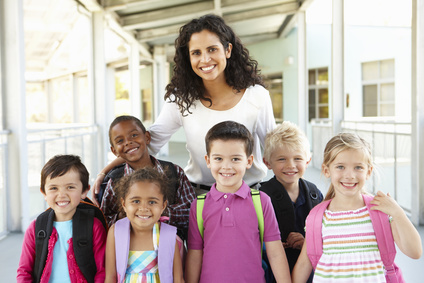Good Fit Friends: Helping Kids Navigate Peer Relationships
There was a time when the hardest part of going to school for most kids was the academic work. Today, some of the toughest days for kids have little to do with their lessons and everything to do with their peers. While bullies have always existed, as well as disagreements on playgrounds, the youth culture of today has significantly changed bringing with it new challenges.
In a 2011, a 15 year, meta-analysis research study on North American youth revealed a 40% decline in empathy and 35% reduced capacity for perspective taking. This lack of caring is evident in peer interactions and is changing the nature of our classrooms, lunchrooms, and playgrounds.
Bullying now tops the list of parental concerns with at least 1/3 of children reporting they are being bullied in any given 6-week period according to the National Institute of Mental Health. Children come home from school in varying emotional states depending on the nature of their peer interactions.

What is Driving the Changes in Peer Relationships?
One of the greatest challenges for kids in a school environment is the increasingly peer oriented nature of their classrooms. Peer orientation refers to the fusion of children to each other for the purpose of meeting their attachment needs. Far too many children are using peer relationships as a replacement for the missing adult connections in their life.
The phenomena of peer orientation was first outlined by Gordon Neufeld, a clinical and developmental psychologist, and Gabor Mate, a physician, in their best-selling book Hold Onto Your Kids. Peer orientation is due in part to the increasing levels of separation between kids and parents today, the increased amount of time kids spend with their peers, and the pressure to socialize children with their same aged peers.
The challenge with peer oriented kids is they are not easily influenced and directed by the adults in their life, including both teachers and parents. They will take directions and adopt values that are in keeping with their peer culture. This leads to immature behaviour and in worst case scenario, aggression and hostility to those outside of their peer pack.
When children run in packs without orienting to an adult to guide them, the scenario is very similar to that described in William Golding’s book, The Lord of the Flies. Their conduct and behaviour can be brutal, leaving a trail of wounded children in their wake.
There is a difference between a child having friends versus being fused with them in order to have their relational needs met. If a child becomes peer-oriented then the first order of business will be to restore their adult relationships. Peer orientation can lead to developmental arrest, a loss of teachability, and emotional inhibition.
Strategies for Helping Kids Navigate Peer Relationships
- Foster adult attachments in and out of school – One of the biggest buffers against wounding in a school environment is being attached to caring adults. When kids cares more about what their adults think of them, then their heart is better protected from the wounding words of their peers. It is imperative for a child to have a good relationship with their teacher, especially in the younger years. If your child is struggling, then asking a teacher to connect and check in with them whenever they can is a great strategy. When a child feels they can turn to their teacher, then the school day stress and classroom environment can become more manageable.
- Structure the unstructured time – Peer challenges often appear when there is little adult supervision and unstructured time. When left to their own devices, peer oriented kids can gather in packs and torment kids in the lunchroom or playgrounds. One of the most effective strategies to curbing such behaviour is to ensure there is adult supervising when their time is most unstructured. Adult supervision helps to temper, monitor, and take care of peer oriented behaviour when it gets out of line.

- Draw out a child’s feelings and thoughts – In debriefing school experiences it is important to listen, not judge, or become upset when your child is reporting on what has happened. If a child believes their experiences are overwhelming for a parent or they will have strong reactions, then they may stop sharing their stories altogether. It is important for a child to sort through their own feelings and thoughts in a safe environment and to have their tears if necessary. When a child can do this they can often come up some helpful solutions and understand their peer problems better. They are also more amenable to hearing our suggestions as well.
- Help them identify ‘good fit friends’ – Discuss with a child who they consider a ‘good fit friend’ to be. A good fit friend should be someone they feel similar to, doesn’t take advantage of them, treats them kindly for the most part, and they feel comfortable in being around. Helping a child articulate what a ‘good fit friend’ looks and acts like helps them feel a sense of agency in being able to pick friends and find those that are a good match. It also validates their intuition about other kids and draws out their insight as to who is not a safe friend or where they feel most uncomfortable. The term ‘good fit’ also avoids polarizing language that paints other children as ‘bad’ or ‘good.’ Fortunately, a child who has a soft heart and is in right relationship with their adults will often be drawn to similar children as oneself.
- Intervene when necessary – Many peer altercations and challenges can be helped through supervision, therefore, bringing a teacher into the conversation can be helpful. Sometimes teachers are not aware that a child is struggling in their peer relationships and can provide valuable insight as to how a child is managing in the classroom. These conversations are often done best privately where a child’s concerns are not openly revealed to other students or parents of other children. Being covert and asking for privacy protects the child’s dignity and does not overly reveal their struggles which could be further preyed upon by peer packs. When sharing your concerns with a teacher, offer concreate strategies wherever possible such as a moving your child’s desk, or suggestions for pairing your child with others for the purpose of group work.
Peer friendships are a part of growing up and offer children an opportunity to connect with people who share similar interests as oneself. Helping kids navigate the friendship terrain is an important one as well as not forcing connections where it is clear there is no invitation for relationship. Too often our agenda is one of helping kids get along with others, and while there is merit in this approach, it doesn’t take into account that not all kids will like each other or do well together.
Children need to feel a sense of agency in being able to choose ‘good fit friends,’ and to be guided by adults on how to deal with tricky peer relationships when they arise. Kids will be hurt by their peers but the good news is that the wounding doesn’t have to go deep. Adults relationships in an out of school have the capacity to shield a child’s heart from the worst of their peer’s wounding ways.
Dr. Deborah MacNamara is the Director of Kid’s Best Bet, a counselling and family resource center, on Faculty at the Neufeld Institute, and author of Rest, Play, Grow: Making Sense of Preschoolers (or anyone who acts like one). For more information please see www.macnamara.ca or www.neufeldinstitute.org.





